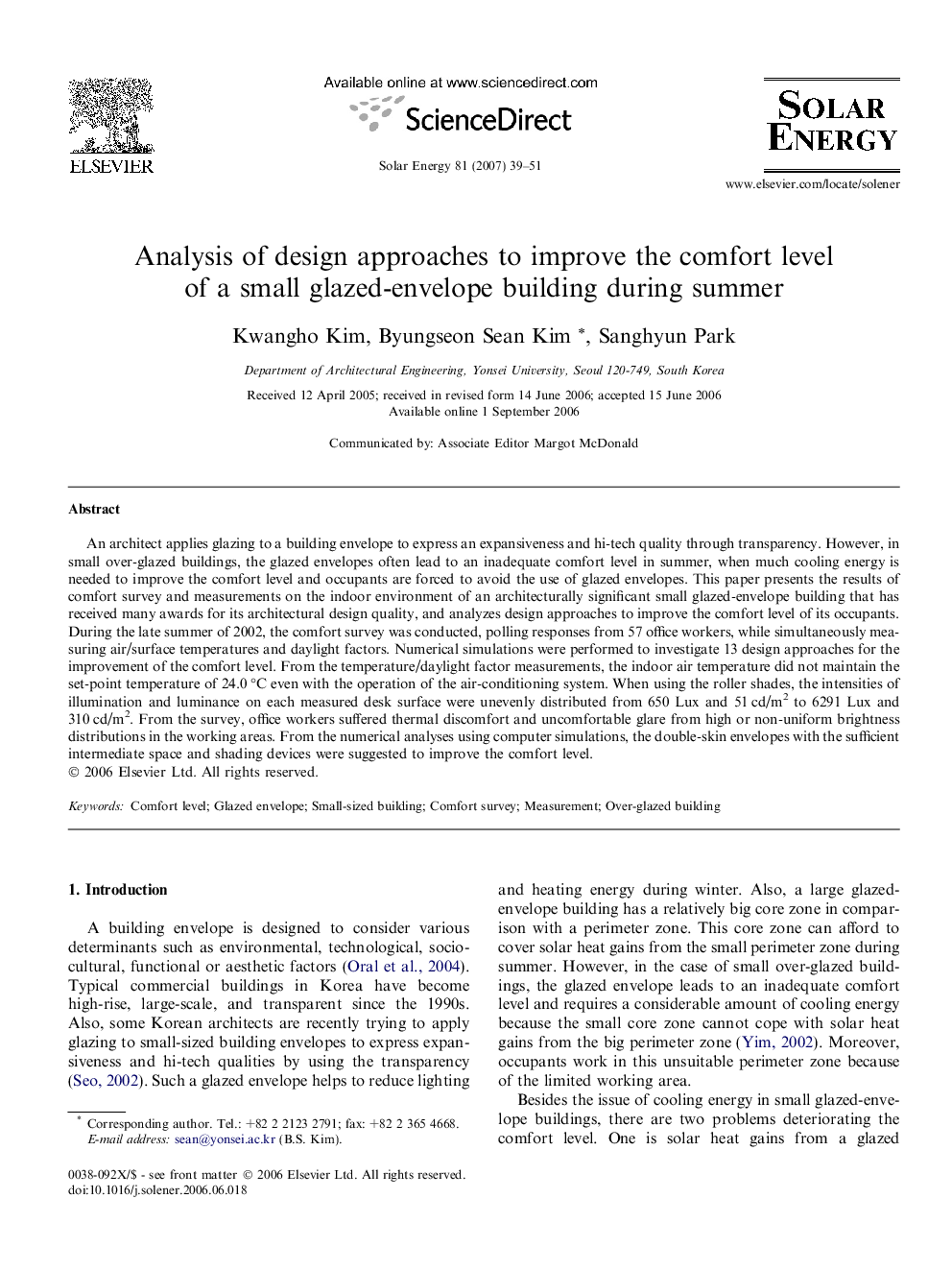| Article ID | Journal | Published Year | Pages | File Type |
|---|---|---|---|---|
| 1552213 | Solar Energy | 2007 | 13 Pages |
An architect applies glazing to a building envelope to express an expansiveness and hi-tech quality through transparency. However, in small over-glazed buildings, the glazed envelopes often lead to an inadequate comfort level in summer, when much cooling energy is needed to improve the comfort level and occupants are forced to avoid the use of glazed envelopes. This paper presents the results of comfort survey and measurements on the indoor environment of an architecturally significant small glazed-envelope building that has received many awards for its architectural design quality, and analyzes design approaches to improve the comfort level of its occupants. During the late summer of 2002, the comfort survey was conducted, polling responses from 57 office workers, while simultaneously measuring air/surface temperatures and daylight factors. Numerical simulations were performed to investigate 13 design approaches for the improvement of the comfort level. From the temperature/daylight factor measurements, the indoor air temperature did not maintain the set-point temperature of 24.0 °C even with the operation of the air-conditioning system. When using the roller shades, the intensities of illumination and luminance on each measured desk surface were unevenly distributed from 650 Lux and 51 cd/m2 to 6291 Lux and 310 cd/m2. From the survey, office workers suffered thermal discomfort and uncomfortable glare from high or non-uniform brightness distributions in the working areas. From the numerical analyses using computer simulations, the double-skin envelopes with the sufficient intermediate space and shading devices were suggested to improve the comfort level.
